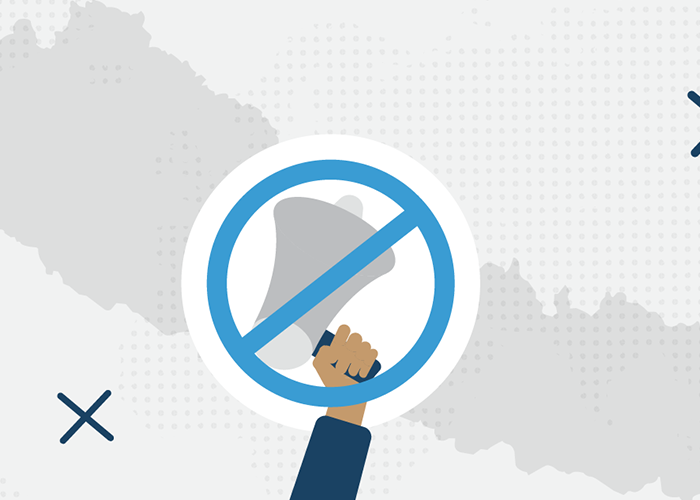Impunity poses serious threat to independent media in Nepal

Recognizing the drastic consequences of impunity for crimes against journalists, the United Nations General Assembly announced in 2013 that 2 November would be the ‘International Day to End Impunity for Crimes against Journalists’ (IDEI), and member states were urged to implement measures to counter the existing culture of impunity.
With the aim of alerting Nepal’s state agencies, particularly its security forces and the judiciary, regarding impunity for crimes against journalists, the United Nations introduced the UN Plan of Action on the Safety of Journalists and the Issue of Impunity (2013 to 2016). The National Human Rights Commission (NHRC) sought the establishment of a national mechanism for the protection and safety of journalists but unfortunately, it was unable to do so. Furthermore, no concrete action has been taken by the state authorities to arrest those perpetrators who have committed crimes against journalists.
The Constitution of Nepal safeguards the fundamental rights of citizens including the freedom of opinion and expression, the right to communication and the right to information. Correspondingly, the Working Journalist’s Act (WJA) of Nepal also guarantees the working environment for journalists. However, journalists in post-conflict Nepal have been found to be practicing self-censorship due to the widening culture of impunity in the cases of crimes against journalists.
Although there are no instances of journalists having been killed in recent years in Nepal, their safety has become more difficult to ensure due to the government’s unwillingness to arrest those perpetrators who killed journalists during and after the 10-year conflict. The media in Nepal continues to face issues of self-censorship because the government and political leadership have failed to fulfill their commitment to arrest the perpetrators of crimes against journalists.
The safety of journalists and the issue of impunity are of crucial importance to Nepal’s transitional justice process. As well as enforced self-censorship, there is widespread harassment of journalists who observe the wrongdoings of both state and non-state actors, and thus the extensive culture of impunity in Nepal poses serious threats to the independent media.
The state’s failure to offer justice to victims by addressing the cases of the murder and disappearance of journalists during the conflict and thereafter has further encouraged violations of various human and media rights.
- According to UNESCO, globally, close to 1,200 journalists have been killed simply for reporting the news in the past fourteen years (2006-2019)
- In nine out of ten cases, the killers go unpunished
- According to the Federation of Nepalese Journalists (FNJ), a total of 35 journalists have been killed in Nepal since 1996
- Of these cases, only five have been subject to the judicial process
- The whereabouts of four journalists remains unknown
- As of 2019, more than two-thirds of cases that include the killing and disappearances of journalists have not been investigated by the police
It is significant that the victims’ families will not achieve justice until the police investigations into these incidents are completed. A study co-edited by this writer (UNESCO, 2016) states that, whereas the issue of journalists’ safety is significant across the world, it is more so in the case of Nepal as the political transition is taking a relatively long time and journalists have remained under a high level of risk despite the constitutional as well as legal provisions regarding the right to freedom of opinion and expression and the freedom of the press. The study also mentioned that the problem of impunity has further complicated the situation.
Disappointingly, the transitional justice commissions of Nepal, namely the Truth and Reconciliation Commission (TRC) and the Commission for the Investigation on Enforced Disappeared Persons (CIEDP), have been unable to investigate or recommend to the government that reparation is offered to victims of the conflict with regard to the cases of murdered and missing journalists. These commissions were established in February 2015 to deal with the human rights violations of the 10 yearlong armed conflict (1996-2006) that also include instances of the violation of media rights during that period. For example, both the TRC and the CIEDP have not yet investigated the complaints lodged by FNJ regarding incidents related to the murder and disappearance of journalists. Similarly, no action has been taken by these commissions regarding cases that have been registered by the families of the victims.
It is important for all concerned to advocate and interact more closely with the judicial and security institutions for the effective implementation of press freedom mechanisms that focus on ways to end impunity for crimes against journalists. Any incident intended to discourage journalistic freedom should be taken seriously. With more needed to be done to combat the fear and self-censorship among journalists, an effective state policy is required to implement its commitment towards independent media, to end impunity, and to provide justice to conflict victims.
(Source: DevelopmentAid, 02 November 2020)